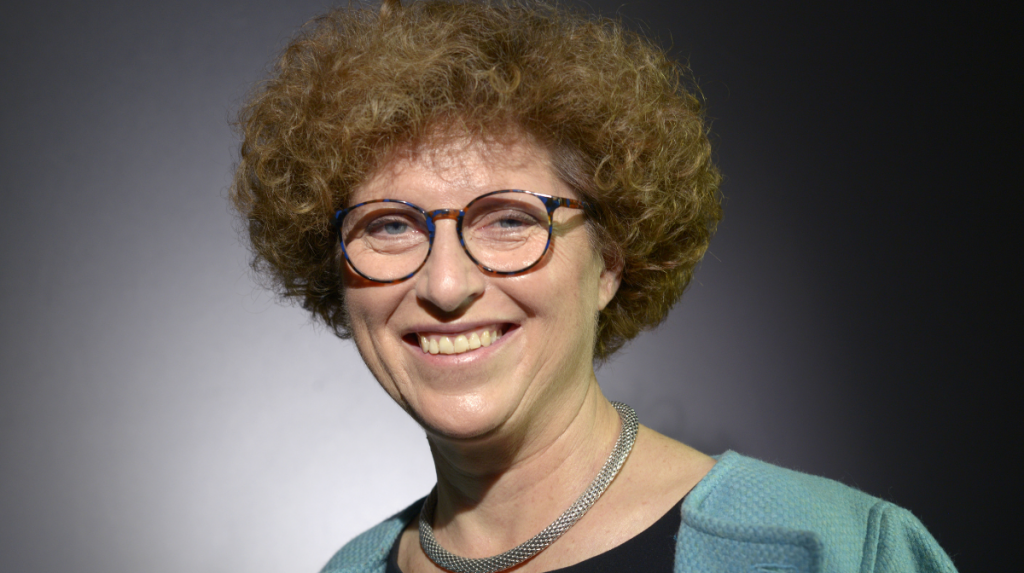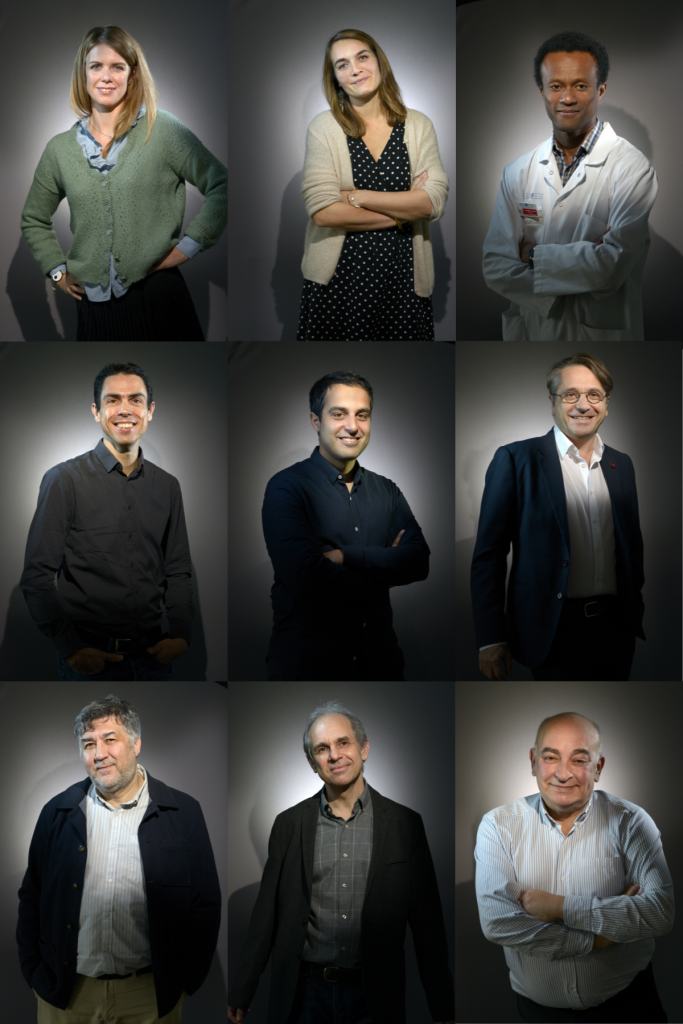Marion Leboyer, 2021 Grand Prize
Through her research into psychiatric illnesses, Marion Leboyer has made a significant contribution to improving treatment for patients with the goal of personalized medicine for all. The Grand Prize rewards the innovative nature of her work, particularly in bipolar disorders, schizophrenia, and autism spectrum disorders.
Discover all the 2021 Inserm Prize winners

A life dedicated to understanding and improving the treatment of mental illnesses
Exactly 40 years ago, Marion Leboyer encountered the field of psychiatry “by chance, she admits. During my choice of internship, I did not get the one in neuropediatric intensive care – I took what appeared to me to be its polar opposite: psychiatry. But from the first semester, I told myself that if we were not treating patients well enough it was because we did not have the right diagnostic tools for – or sufficient understanding of – those diseases. By chance once again, at the time of making this observation and when starting her internship at Louis-Mourier Hospital in Colombes, she met Philippe Meyer, head of an Inserm unit at Necker-Enfants Malades Hospital in Paris. He suggested that she work on serotonin, a neurotransmitter back then newly suspected of being a marker for depression. In 1982, she published her first article on the subject1, cementing her loyalty to both Inserm and the field of research.
A family of teachers and researchers
This choice, however, owed nothing to chance. Her mother, Claude Lévy-Leboyer, was a university professor in occupational psychology, her father, Maurice, a leading French economic historian, and her uncle, Frédérick Leboyer, an obstetrician known for his method for birth without violence. As she explains: “At home, we talked research morning, noon, and night. And when it came to conducting medical research, there was no other institution than Inserm. »
Therefore, throughout her career, medicine, teaching, research and Inserm have gone hand in hand. Proof being her medical dissertation published in 19852, which concerned autism. As for her science dissertation, it focused on the genetics of manic-depressive illness and schizophrenia, “a very innovative approach back then,” she recalls. She began it in 1986, thanks to an Inserm research fellowship, in the Epidemiological Genetics laboratory, directed by Josué Feingold, “her master,” as she calls him. Then, in 1998, she was made university professor-hospital practitioner at Henri-Mondor Hospital in Créteil, where she headed up the psychiatry department. She then contributed with Bruno Giros to the creation of the Inserm Neurology and Psychiatry laboratory at the Faculty of Medicine of Université Paris-Est Créteil.
An extraordinary team
Since then, the team has never stopped growing and developing new approaches. “In psychiatry, we work on very heterogeneous pathologies, she explains. In order to improve our understanding of the causes and mechanisms of each, and above all to propose more precise therapeutic strategies, we need to identify homogeneous subgroups of diseases. That is why we have to use various tools: genetics, immunology, brain imaging, epidemiology. »
These days, within the Mondor Institute for Biomedical Research (IMRB, Unit 955 Inserm/Université Paris-Est Créteil, Créteil), the Translational Neuropsychiatry laboratory that Leboyer has directed since 2007 with Stéphane Jamain has 62 people divided into five groups specializing in these different fields, including research into biologics, and located across three sites: Henri-Mondor Hospital and Albert-Chenevier Hospital in Créteil, and NeuroSpin at the French Alternative Energies and Atomic Energy Commission (CEA) in Saclay.
The cost of mental health
In addition, the laboratory is supported by the FondaMental foundation that Leboyer created in, and has directed since, 2007. This scientific cooperation foundation facilitates 52 expert centers of care and research platforms specializing in schizophrenia, bipolar disorders, resistant depression, and autism spectrum disorders. “To date, 20,000 patients have benefited from psychiatric and, of course, somatic diagnostic workups there because there is no health without mental health and vice-versa (only available in French),” she emphasizes. Their follow-up shows an improvement in their prognosis and a halving of the number of hospitalizations. Results to be compared with the health-economic impact of psychiatric illnesses. Indeed, “In 2013, with the Health Economics Clinical Research Unit (URC-Eco), we worked out that the direct and indirect costs of mental health amounted to 109 billion euros per year in France3, she specifies. We also evaluated the costs per pathology: 9,000 euros per year for bipolar disorders and 15,000 euros for schizophrenia4! If anyone was in any doubt, these figures confirm that mental illnesses are a major public health issue, and that research and innovation are essential.
In this regard, Leboyer confides: “I am curious about everything, so I did not want to stay focused on one area.” This is evidenced by the 960 publications under her belt. Over the years, new approaches have therefore been added in addition to genetics.

From genetics to immunopsychiatry
In 2003, Leboyer, along with Stéphane Jamain and Thomas Bourgeron from Institut Pasteur, were the first to identify mutations in the genes involved in the establishment of the central nervous system in autism5. This was followed by the discovery of other involvements: clock genes in bipolar disorders6 and immune system genes (human leukocyte antigen [HLA] system) in various psychiatric illnesses7. This work in genetics led Leboyer to join two international consortia that bring together specialist scientists from around the world: the Psychiatric Genomics Consortium and the ConLiGen network. As she points out, « national and international collaborations are essential if we are to progress, and we are part of many European projects in our various areas of interest. » For example, she heads up the Immuno-NeuroPsychiatry Network, an approach that the team has brought to light.
Ryad Tamouza’s group has thus demonstrated the involvement, in psychotic and bipolar disorders, of the activation of viruses whose DNA is present in our genome8 or has contributed to discovering the concept of psychoses due to autoantibodies, which are produced by the immune system but attack the body’s own cells9. “This approach makes it possible to stratify psychiatric pathologies by immuno-inflammatory signature10 or according to the characteristics of their immune response,” says Leboyer. “The links between genetic and environmental risk factors have also led us to take an interest in the environment and therefore to conduct epidemiological studies,” she adds. Thanks to these, Franck Schurhoff’s group has established an increased risk of developing schizophrenia in urban areas11 or following childhood trauma12. Cohort studies have also shown, for example, that the metabolic syndrome predisposing to cardiovascular disease is 2–4 times more common in psychiatric patients than in the general population13. “More broadly, epidemiology highlights that comorbidities are the leading cause of death for psychiatric patients, resulting in the loss of 20 years of life expectancy, » she explains.
Tailor-made treatments
The team has also joined forces with five hospitals, new-technology companies and Argos 2001, an association of patients with bipolar disorders, in order to test a tailor-made care pathway for them. BP Passport is thus based on a very thorough clinical evaluation in addition to digital mechanisms. They make it possible to offer care plans to patients, meet their health needs, and provide them with digital psychosocial therapies. These tools also make it possible to alert the coordinating nurse in charge of the patient before the situation deteriorates.
In the same spirit of innovation, Josselin Houenou’s group based at NeuroSpin in Saclay is conducting brain imaging studies which have contributed to the description of the anatomy and neural connections of the brain in bipolar disorders in particular14. “We can thus improve the precision of treatments with transcranial magnetic stimulation for patients who suffer from severe depression,” specifies Leboyer. This painless technique involves inducing weak electrical currents in specific areas of the brain to stimulate them.
The explosive cocktail of COVID-19
COVID-19 shed new light on all of this research. With the pandemic an explosive cocktail characteristic of psychiatric illnesses arose: viral infection, stress, social isolation, domestic violence, etc. In April 2020, Leboyer sprung into action in both the care and research fields. She set up CovidÉcoute followed by Écoute Étudiants Île-de-France (for students), digital platforms dedicated to psychological support and listening, which offer information, advice, practical exercises, and remote consultations with psychologists. She has also measured the impact on mental health in the general population, among students and within her patient cohorts, and studied the consequences of inflammation due to infection in people with mental illnesses. Finally, she alerted the public authorities to the need to include these patients who are victims of excess mortality15 among the priority populations for vaccination16.
The pandemic therefore shone the spotlight on psychiatry, which had until then suffered from indifference, “although not from Inserm, which has always encouraged me. In January 2019, in his first speech as Chairman and CEO, Gilles Bloch underlined the need for support for research in psychiatry,” insists the doctor and researcher.
In 2020 and 2021, two young researchers in epidemiology and neuroimaging joined the team after successfully completing the Inserm competitive examination. This success stimulated Leboyer’s ever tireless motivation, which she acknowledges: “I work all the time. It may not be good for one’s health. But it is a necessary evil because I dream of having personalized treatments for our patients, like those used in oncology or for cardiovascular diseases! »
Notes :
1: H. L. Kim et al. C R Séances Acad Sci III, November 22, 1982; 295 (10): 619–22
2: M. Leboyer, Autisme infantile : fais et modèles, Presses universitaires de France, October 1985
3: K. Chevreul et al. Eur Neuropsychopharmacol., August 2013; doi: 10.1016/j.euroneuro.2012.08.012
4: C. Laidi et al. Eur Neuropsychopharmacol., January 2018; doi: 10.1016/j.euroneuro.2017.11.020
5: S. Jamain et al. Nat Genet., May 2003; doi: 10.1038/ng1136
6: P. A. Geoffroy et al. Sci Rep., May 19, 2015; doi: 10.1038/srep10232
7: R. Tamouza et al. Brain Behav Immun., October 5, 2020; doi: 10.1016/j.bbi.2020.09.033
8: H. Perron et al. Transl Psychiatry, December 4, 2012; doi: 10.1038/tp.2012.125
9: J. Jézéquel et al. Am J Psychiatry, April 1, 2018; doi: 10.1176/appi.ajp.2017.17091053
10: E. Martinuzzi et al. Transl Psychiatry, January 17, 2019; doi: 10.1038/s41398-018‑0366‑5
11: A. Szöke et al. BMC Psychiatry, March 17, 2014; doi: 10.1186/1471–244X-14–78
12: B. Etain et al. Sci Rep., November 6, 2015; doi: 10.1038/srep16301
13: O. Godin et al. J Clin Psychiatry, October 2014; doi: 10.4088/JCP.14m09038
14: S. Sarrazin et al. JAMA Psychiatry, April 2014; doi: 10.1001/jamapsychiatry.2013.4513
15: B. Vai et al. Lancet Psychiatry, September 1, 2021; doi: 10.1016/S2215-0366(21)00232–7
16: L. J. De Picker et al. Lancet Psychiatry, February 17, 2021; doi: 10.1016/S2215-0366(21)00046–8
